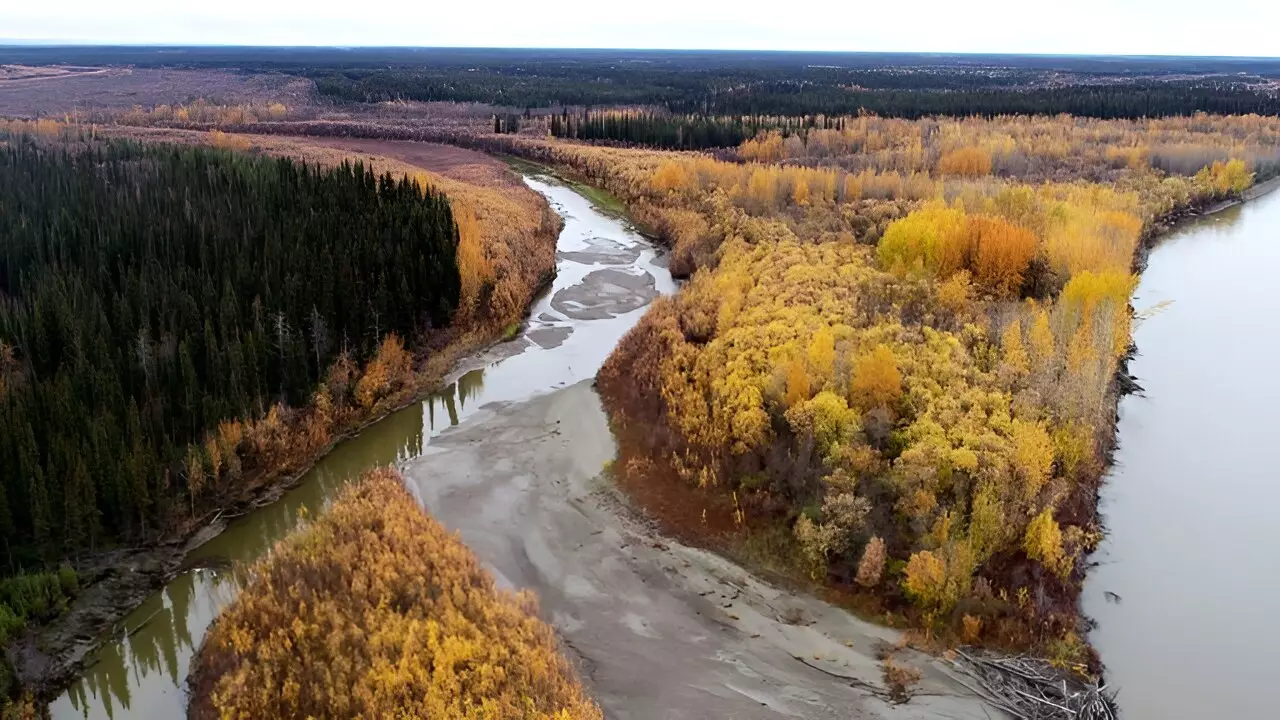The Arctic region is undergoing rapid transformations due to climate change, which is deeply impacting both the environment and human health. Among the various consequences, the Yukon River serves as a critical artery in this landscape, significantly contributing to the erosion of permafrost along its banks. This process does more than change geography; it releases mercury—an insidious pollutant that has been entrapped in permafrost for millennia. As temperatures rise in the Arctic, some studies suggest this area is warming up to four times faster than the global average, prompting concerns about a potentially catastrophic release of toxic substances, particularly mercury, into the ecosystem.
Recent research conducted by the USC Dornsife College of Letters, Arts and Sciences takes a closer look at how much mercury is being released and how much remains locked away in thawing permafrost. The implications of this study extend beyond mere academic curiosity; they resonate with the more than five million people inhabiting the Arctic region, especially the three million living in areas where permafrost may shrink significantly by the mid-21st century. As these communities depend on local wildlife resources for sustenance, the introduction of mercury into their food chain poses a pressing public health concern.
Mercury is not a newcomer to the Arctic. Due to atmospheric circulation patterns, pollutants tend to migrate toward high latitudes, where they accumulate in environments like permafrost. Over thousands of years, natural processes have allowed mercury to seep into the soil. Nothing illustrates this better than the intricate life cycle of the Arctic ecosystem, where mercury is absorbed by plants that later die and become part of the permafrost. This accumulation process is now being disrupted by climate-induced thawing, leading to a release dynamic that has been poorly understood until now.
The research team focused its efforts on two villages within the Yukon River Basin—Beaver and Huslia—in Alaska. While traditional mercury measurement techniques involved sampling the top few meters of permafrost, this approach lacked depth and consistency. The USC Dornsife-led team innovated by analyzing mercury levels in sediment along the riverbanks and within sandbars, which revealed a much more substantial concentration than previously recorded. The researchers discovered that sediments with finer grains carried higher mercury concentrations, indicating that specific soil types are clear vectors for mercury contamination.
One of the pivotal aspects of this research is its examination of the Yukon River’s shifting course. Using remote sensing technology, scientists monitored these changes over time, which play an integral role in how much mercury-laden sediment is eroded and subsequently redeposited along the river’s banks. This continuous cycle informs our understanding of mercury mobility in the environment and highlights the necessity of considering both erosion and reburial when estimating the potential release of mercury from melting permafrost.
While immediate toxic threats from mercury in the river may not be acute, researchers emphasize that long-term exposure poses substantial risks. The accumulation of mercury in the food chain predominantly occurs through fish and game, as Arctic communities traditionally rely on hunting and fishing for nutrition. This means that with each passing year, as more mercury is released into the environment, the risks to health intensify.
The research carries a clarion call: the methodologies developed could significantly refine estimates regarding the so-called “mercury bomb” lurking beneath the melting permafrost. The study indicates that in order to fully grasp the implications of these findings, a nuanced understanding of how mercury behaves post-release must be achieved.
The researchers involved in this project hope that their findings can spur new avenues for addressing the mercury threat. As Josh West, a co-author, puts it, “To really get a handle on how much of a threat the mercury poses, we have to understand both the erosion and reburial processes.” The objective is not merely academic; the aim is to diffuse this latent threat before it manifests in catastrophic ways for Arctic communities with limited resources to combat health crises.
The ongoing changes in the Arctic landscape due to climate change bring to light the urgent need for comprehensive research and adaptive strategies focused on mitigating the health risks associated with mercury exposure. The stakes are high, and as global temperatures rise, proactive measures must be taken to protect vulnerable ecosystems and the communities that depend on them.

